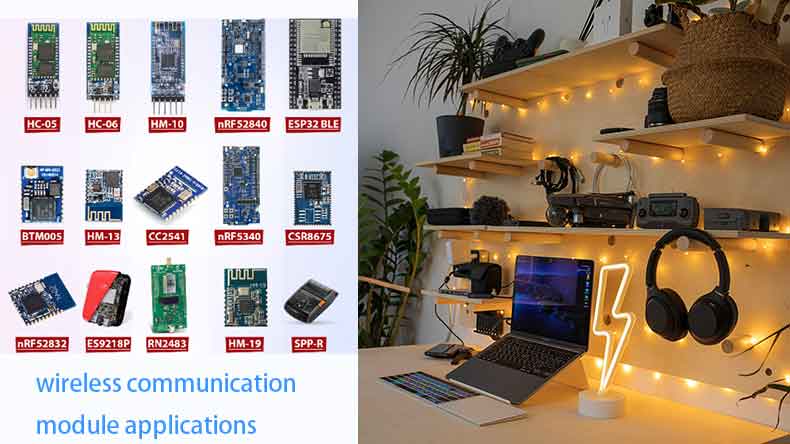
In the modern world, wireless communication modules serve as the backbone of our interconnected world. In this article, we'll discuss the applications and protocols/standards of wireless modules and their cost-effective and powerful ones for you to know about. Understanding their overview, you can use them to develop wireless communication and take them into PCBA (printed circuit board assembly) and box build assembly.
What is a Wireless Communication Module
A Wi-Fi module enables devices to connect wirelessly. Wireless communication modules are used for vehicle monitoring, telemetry, access control systems, IoT devices, consumer electronics, and industrial machinery. They offer communication functions like Bluetooth and GPRS support and remote management capabilities. These modules boast features like transparent data transmission and support for various software systems. Wireless modules offer advantages like good compatibility, shorter construction periods, better adaptability to challenging environments, scalability, and over-wired communication systems.
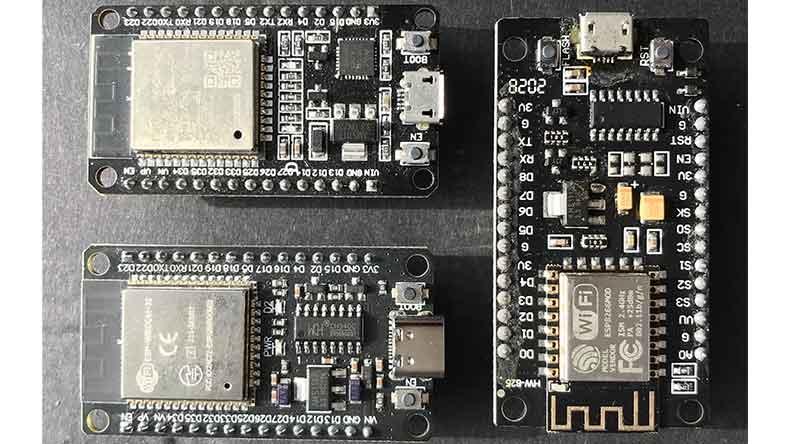
When considering a wireless communication module, it's crucial to delve into the technical parameters. The data format, baud rate, and power supply specifications are not just numbers on a spec sheet. They hold immense importance in determining the module's suitability for specific applications. Whether it's for short-range or long-range communication, understanding these parameters is key to making an informed decision.
The heart of a wireless communication PCBA is the MCU (Microcontroller) chip or module. This IC processes data and manages wireless communication connectivity. Popular MCUs like ESP32, PIC16F684, and ESP8266 are the unsung heroes that make wireless communication possible.
A wireless module is miniature with a compact design for efficient heat dissipation and signal integrity. It incorporates a radio transceiver for network connection and has an antenna for signal transmission and reception wirelessly. Besides, it has efficient power management, which is beneficial for battery-powered devices, employing voltage regulation and filtering.
Applications of Wi-Fi Modules
They enable remote control and monitoring across a range of devices, including smart home appliances, industrial sensors, healthcare equipment, and agricultural machinery. In retail, hospitality, transportation, and security. Following are some of the areas where wireless communication modules are used.
Wireless Consumer Electronics
Wireless modules are used in devices used for entertainment, communications, and recreation, including:
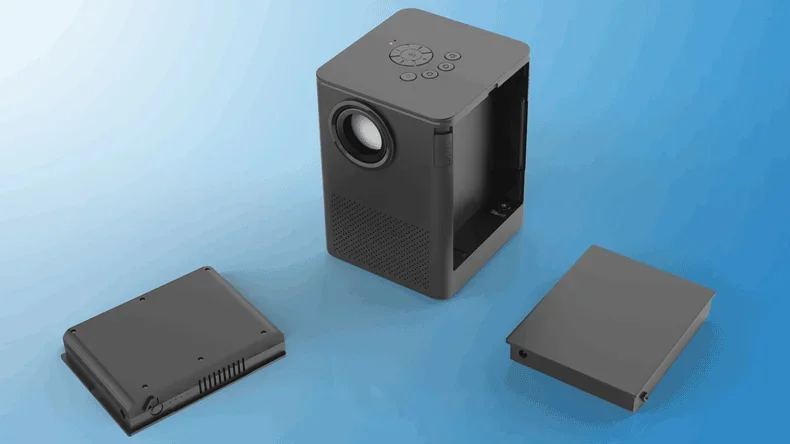
- Smart Home Devices like door locks, lights, conditions, automatic curtains, projectors, coffee machines, mixers, and pet monitors
- Security cameras and alarms for security purposes and remote monitoring
- Speaker devices like Amazon Echo and Google Home for voice recognition
- Creative small home appliances that rotate (using MCU)
Smart city solutions
Smart city infrastructure relies on smart transportation systems, smart energy management systems, and smart environment monitoring systems. These smart-systems all require hardware control boards to process remote data collection, data analysis, and user interface interaction. Wireless communication modules are the heart of the control boards.

Industrial Internet of Things
Industrial IoT encompasses sensors, processing ability, and software that connect and exchange data wirelessly. Industrial equipment and automatic systems, such as PLC (programmable logic controller) control boards and industrial robot control boards, are used in the control and monitoring of the industrial production process.

For Industrial Sensors, a wireless module enables sensors to monitor and transmit data on environmental conditions and equipment status in industrial setups. While in asset management systems, WiFi-enabled tags and sensors track asset location and status within warehouses and manufacturing facilities. Wireless modules also facilitate remote monitoring and control of industrial equipment and machines in real-time.
Smart Healthcare
In the healthcare industry, wireless connectivity facilitates remote patient monitoring and telehealth applications. Various medical devices utilize wireless modules for data transmission, including patient monitors and infusion pumps. Smartwatches and fitness trackers sync data with smartphones and the cloud via wireless networks.

Smart Agriculture
Precision Farming has come out as a modern approach to agriculture practices. The wireless connectivity of sensors with visualization monitors optimizes crop management, irrigation, and livestock monitoring in agricultural machinery and sensors. Another growing field in the agriculture business is remote farm management. With remote farm management, farmers can remotely control and monitor equipment and the status of crops, enabling wireless communication. Besides, intelligent weather monitors and intelligent agricultural robots all require hardware controllers to achieve automated control and data analysis, which are developed based on wireless communication modules.
For example, the below PCBAs applied with conformal coating are used for automatic watering plants. The pattern of plant roots represents areas that can be inserted into the soil. When the humidity sensor on the PCBA detects the need for watering, the speaker above will sound.
![]()
What to Consider in Designing PCBA with Wireless Module
ESP32 and ESP8266 support both Wi-Fi and Bluetooth functions and make designing PCBAs (printed circuit board assemblies) for wireless communication modules not intricate.
The first step in designing the wireless PCBs involves selecting the appropriate wireless module. To select the right module for your application, you need to consider factors like communication protocol, range, and power consumption.
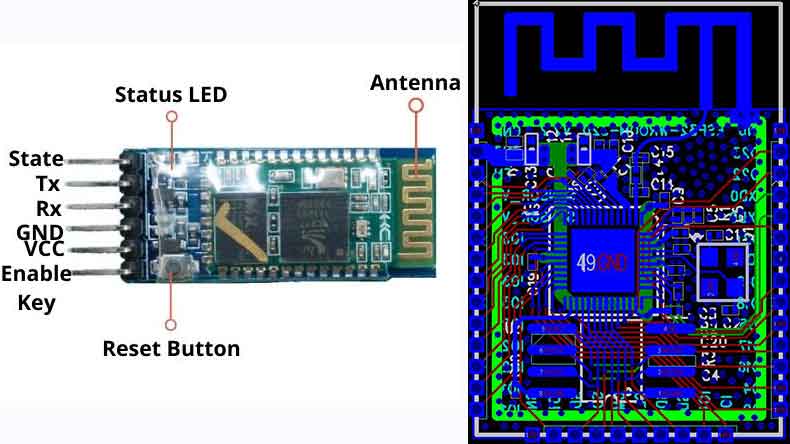
In placing the components on to the PCB, keep in mind to minimize the interference and optimize signal transmission. This often includes using features such as RF shielding, proper grounding techniques, and trace impedance control.
In wireless applications, antenna placement holds the position of a crucial factor. The antenna is placed away from interference sources like power supplies or signal lines. Moreover, it's essential to position the antenna where it can efficiently radiate the RF signal. This results in the placement of the antenna along the PCB edge for unobstructed connectivity to other devices.
Another critical consideration in PCB design using wireless modules is the integration of a ground plane. The ground plane acts as a signal reference point. It is recommended to place the ground plane beneath the wireless module to avoid interference.
Besides, it is essential to add decoupling capacitors. The decoupling capacitors help filter out the noise to deliver stable power to the PCB components. These capacitors are usually placed in nearer to the wireless module to minimize signal path length.
Furthermore, the PCB layout should be precisely designed by keeping manufacturing processes in mind. PCB size, component placement, and copper trace thickness are some of the factors that should be optimized before going to manufacturing.
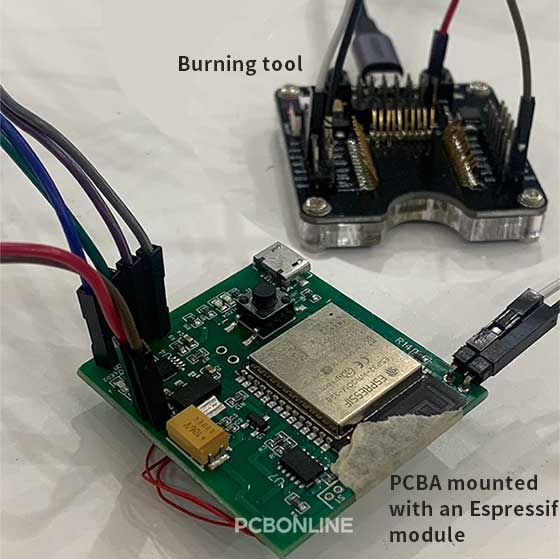
PCBONLINE, a one-stop PCBA manufacturer for IoT devices, not only provides PCB assembly and final product box build assembly but also has PCBA and IoT device R&D capabilities to serve clients with initial ideas. Suppose you need ODM (original design manufacturing) or EMS (electronic manufacturing services) for IoT devices. In that case, PCBONLINE can work for you and provide a one-stop solution and manufacturing until the final product bulk production and delivery.
Protocols Used in Wireless Communication Modules
There are various types of wireless modules for different applications and requirements. One of the most common types of wireless modules is the Wi-Fi module. It enables the devices to connect to wireless local area networks (LANs) for internet access and data exchange. Another famous type of wireless module is the Bluetooth module. A Bluetooth module is designed for short-range wireless communication between devices within a personal area network (PAN). Bluetooth modules are considered ideal for wireless headphones, speakers, wearable devices, and automotive applications. In addition to the well-known modules like Wi-Fi and Bluetooth, there exist other wireless modules such as Zigbee, each catering to specific applications.
1. Bluetooth
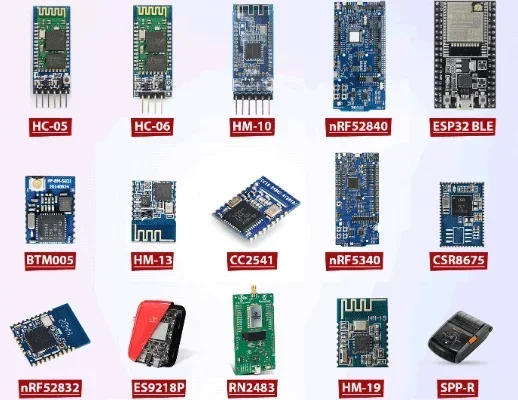
Operating in the 2.4~2.485GHz ISM band, Bluetooth facilitates short-distance data exchange within personal area networks. Offering a swift device networking speed of 10 seconds, Bluetooth offers a transmission rate typically at 1Mbps. Some market-available Bluetooth modules and their applications are:
- HC-05: Audio streaming, data transfer, file sharing, gaming
- HC-06: Data transfer, serial communication, remote control
- ESP32 BLE: Smart home devices, industrial automation, IoT applications
- BTM005: Medical devices, smartwatches, connected toys
- nRF5340: Wearables, high-performance audio, complex IoT devices
2. Wi-Fi
Wi-Fi is a universal wireless LAN technology that is standardized under IEEE802.11. Wi-Fi is used in our daily lives as the cornerstone of wireless communication. It offers a range typically within 100 meters and a transmission rate of up to 54Mbps at the 2.4GHz frequency band. The most common WiFi module used in today's electronics is the ESP8266 module, offering a range of 2.4GHz to 2.5GHz. (All of Espressif's MCUs integrate Bluetooth and Wi-Fi, including ESP32 and ESP8266.)
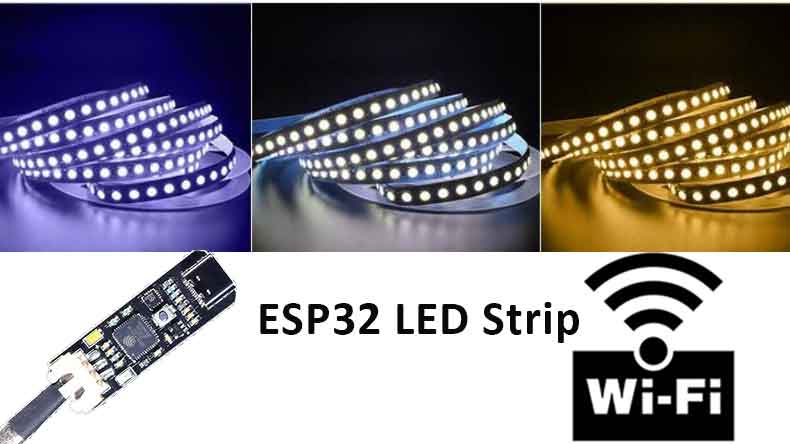
3. ZigBee
Evolving from Bluetooth's limitations, such as high power consumption and short communication distance, ZigBee is tailored to meet industrial automation demands. Its straightforward layout, interference resistance, reliable transmission, and cost-effectiveness make it as a versatile solution. ZigBee's communication distance spans from tens, hundreds, to thousands of meters, rendering it suitable for diverse applications. A "u-blox AG - NORA-B20 Series" is a wireless module offering both Bluetooth and ZigBee technologies with a data rate of up to 2 Mbps. Similarly, "Digi - XBee 802.15.4" is a ZigBee Module of 2.4 GHz and is used for low latency applications.
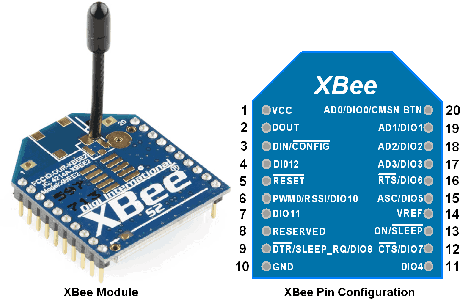
4. Lora
Wireless modules using Lora technology are used for long-range communication. Lora is a low-power and wide-area networking protocol. The battery-operated devices weighing wild animals, sensing humidity and temperatures in forests, monitoring illegal immigrants/invasion near national borders, etc, can send data to smartphones across thousands of miles using the Lora-technology wireless modules.
For example, you can check these self-developed active components using Lora technology. For example, you can see the below MCM78SPI wireless module, which is a radio frequency module based on LORA technology. The functional features of this module are as follows:
- Working voltage: 1.8~3.7V
- Working frequency band: 410-525MHz
- Transmitting power: 19 ± 1dBm (max)
- Ultra-high reception sensitivity: - 136 ± 1dBm (@ 250bps)
- Ultra-long effective communication distance: 5Km@250bps (open distance)
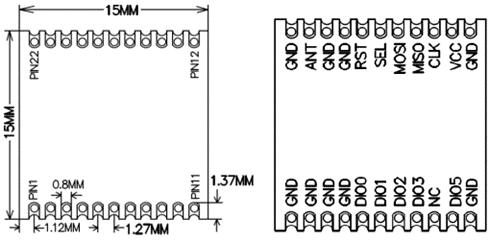
In the below forest fire prevention system, the maximum visible distance is 5 kilometers. A single gateway plus relay can monitor sensors with a radius of 10 kilometers. If the local 4G network signal is not good, the data can also be sent through the Satellite System.
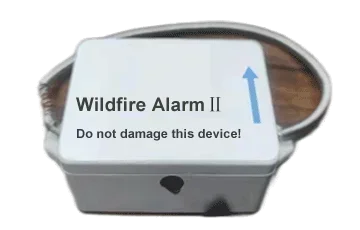
5. Cellular (3G, 4G, 5G)
The Cellular communication protocol involves digital signal processing and offers high-performance data transmission with varying rates. It is a protocol by cellular network providers for mobile devices to connect to the internet and make voice calls. Resilient in complex environments, digital radios offer extensive transmission distances and rates, reaching up to 19.2Kbps. However, their high equipment costs, complexity, and installation requirements present notable challenges.
Besides, the other wireless communication protocols used in wireless modules include RFID (Radio-Frequency Identification), NFC (Near Field Communication), Thread, Z-Wave, and Sigfox.
Affordable and Amazing Wireless Communication Modules
From the above, you know the applications and protocols of wireless communication modules. Are there any affordable and powerful wireless communication modules available for PCB design? Yes. The commonly used wireless communication modules include ESP32, ESP8266, Quectel EC200N-CN, Neoway N720 4G module, Fibocom FM160-NA, and Simcom SIM8200EA-M2 5G module.
ESP32 and ESP8266 are used in IoT devices and require network environments with a router. While the other wireless communication modules listed don't require the Wi-Fi environment - inserting an SIM card into the device makes itself a router for communication.
ESP 32 and ESP8266
ESP32 and ESP8266 come with built-in Bluetooth and Wi-Fi functions and save your time and energy to integrate them on your own. Both ESP32 and ESP8266 cost $2 to $3, which is extremely cost-effective for business makers and original equipment manufacturers.
The famous ESP32 series include ESP32-D0WD-V3, ESP32-D0WDR2-V3, ESP32-U4WDH, ESP32-S0WD (NRND), ESP32-D0WD (NRND), ESP32-D0WDQ6 (NRND), and ESP32-D0WDQ6-V3 (NRND). The ESP32 wireless communication modules feature lower energy consumption.

ESP32 is adaptable and has rich interfaces, including:
- 34 programmable GPIOs (five strapping GPIOs, six input-only GPIOs, six GPIOs needed for in-package flash/PSRAM (ESP32-D0WDR2-V3, ESP32-U4WDH))
- 12-bit SAR ADC up to 18 channels
- Two 8-bit DAC
- 10 touch sensors
- Four SPI interfaces
- Two I2S interfaces
- Two I2C interfaces
- Three UART interfaces
- One host (SD/eMMC/SDIO)
- One slave (SDIO/SPI)
- Ethernet MAC interface with dedicated DMA and IEEE 1588 support
- TWAI®, compatible with ISO 11898-1 (CAN Specification 2.0)
- RMT (TX/RX)
- Motor PWM
- LED PWM up to 16 channels
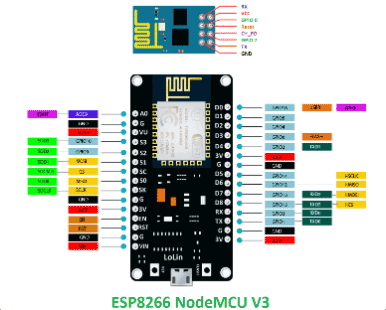
The ESP8266 series include SoCs ESP8266EX and ESP8285, Modules ESP-WROOM-O2D/O2U and ESP-WROOM-O3, and Devkits ESP8266-DevKitC and ESP-Launcher.
ESP8266 supports STA, AP, and STA+AP action modes and USART, GPIO, IIC, PWM, ADC, and SPI. You can use ESP8266 to add network functionality to the device, build a network controller, or use it as an application processor. You can design devices based on ESP8266 for smart homes, smart transportation, industrial control, smart home appliances, smart buildings, and smart factories.
Quectel EC200N-CN
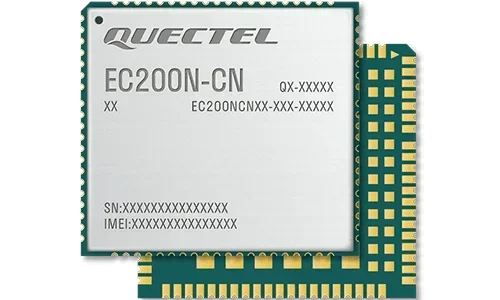
The EC200N-CN is an LTE Cat 1 (Long-Term Evolution Category 1) wireless communication module developed by the Quectel company. It is used in product development in M2M (Machine-to-Machine) and IoT fields, including OTT (over-the-top), CPE (customer premises equipment), routers, data cards, tablets, smart security, and industrial PDAs (personal digital assistants).
Its size is 29.0mm*32.0mm*2.4mm, and its working temperature range is -35°C ~ +75 °C. Let's see the protocols/standards and their frequency bands of EC200N-CN:
- LTE-FDD (long-term evolution - frequency division duplex): B1/B3/B5/B8
- LTE-TDD (long-term evolution - time division duplex): B34/B38/B39/B40/B41
- GSM/EDGE (Global System for Mobile Communications/enhanced data rates for GSM evolution) (optional): B3/B8
- GNSS (Global Navigation Satellite System) (optional): GPS/BeiDou
Regarding functions, the wireless communication module EC200N-CN supports TTS (text-to-speech), audios, and records in audio, module plug-in in GNSS, LCD (liquid crystal display), Lvgl (light and versatile graphics library), Ethernet, FOTA (firmware over-the-air), Wi-Fi Scan, Voicecall, USSL (ubiquitous secure socket layer), and SMS (short message service).
Neoway N720 4G module

N720 is a full Netcom 4G industrial wireless communication module developed by the Neoway company. It is suitable for developing wireless meter reading terminals, vehicle-mounted screens, handheld POS, and industrial routers.
Its size is 30.0 mm x 28.0 mm x 2.8 mm, and its working temperature is -40℃~+85℃. Below are the protocols/standards and their frequency bands of N720:
- LTE FDD: B1/B3/B5/B8
- LTE TDD: B38/B39/B40/B41
- TD-SCDMA: B34/B39
- UMTS: B1/B8
- CDMA2000 1X/EV-DO: BC0
- GPRS|EDGE: 900/1800 MHz
Regarding interfaces, N720 has PCM/I2S, ADC x 2, I2C x 1 (Open), SPI x 1 (Open), UART x 2, USB 2.0, PWRKEY_N, RESET_N, DTR, NET_LIGHT, USIM (1.8 V/3.0 V), SGMII (Open), SDIO 3.0 (Open), and SD card (Open) interfaces. Besides, it supports OpenLinux secondary development and provides API interface calls to simplify product design.
Fibocom FM160-NA 5G Module

FM160-NA is a 5G wireless communication module developed by the Fibocom company. It is suitable for developing devices in CPE, STB (smart terminal box), industrial IoT, and automotive IoT. FM160-NA covers North American mobile networks and can perform data communication in four network standards: NR, LTE-TDD, LTE-FDD, and WCDMA (wideband code division multiple access).
FM160-NA's size is 30mm x 52mm x 2.3mm, and its working temperature is -30℃~+75℃. Let's see the protocols/standards and their frequency bands of FM160-NA:
- LTE-FDD: B2/4/5/12/13/29/30/66/71
- LTE-TDD: B41/46(LAA)/48
- Sub-6 frequency range for 5G: n2/5/12/14/25/30/41/48/66/70/71/77
- GNSS: GPS/GLONASS/Galileo/BeiDou/QZSS
- NR (New Radio) MIMO: DL 4x4MIMO: n2/5/12/14/25/30/41/48/66/70/71/77; UL 2x2MIMO: n41/77
- LTE MIMO: DL 4x4MIMO: B2/4/5/12/13/30/41/48/66/71
- NR SA (Mbps): 2470(DL) / 900(UL)
- NR ENDC (Mbps): 3470(DL) / 555(UL)
- LTE (Mbps): 1600(DL) / 211(UL)
Regarding functions and interfaces, FM160-NA supports VoLTE & VoNR in audio, SMS over IP(IMS), USB3.1/3.0 & USB2.0, PCle4.0, and mainstream operation systems of Windows/Linux/Android.
Simcom SIM8200EA-M2 5G module
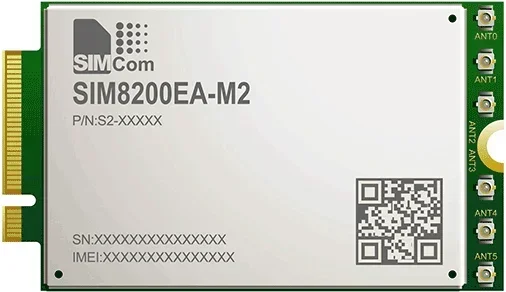
SIM8200EA-M2 is a 5G wireless communication module developed by the Simcom company. It is suitable for developing devices in CPE, smart gateway, drone, live video, telemedicine, and smart security. It is designed for applications requiring high throughput data communications over a wide range of radio propagation conditions.
SIM8200EA-M2's size is 52.0mm x 30.0mm x 2.3mm, and its working temperature is -30℃ ~ +70℃. Let's see the protocols/standards and their frequency bands of SIM8200ER15 5G NSA / SAA-M2:
- Sub-6G(SA): n1/n2/n3/n5/n7/n8/n12/n20/n28/n38/n40/n41/n48/n66/n71/n77/n78
- Sub-6G(NSA): n41/n77/n78
- LTE-FDD: B1/B2/B3/B4/B5/B7/B8/B12/B13/B14/B17/B18/B19/B20/B25/B26/B28/B29/B30/B32/B66/B71
- LTE-TDD: B34/B38/B39/B40/B41/B42/B43/B48
- WCDMA: B1/B2/B3/B4/B5/B8
- GNSS: GPS L1/Galileo/QZSS/GPS L5/GLONASS/BeiDou/Compass
Regarding interfaces, FM160-NA has PCIe, USB3.1, GPIO, and SIM Card 1.8V/2.95V, and it supports R15 5G NSA / SA data transfer up to 4Gbps.
One-Stop PCBA and Box-Builds for Wireless Communication Devices
PCBONLINE is a one-stop PCBA and box-build assembly manufacturer to provides you with PCBA manufacturing, component sourcing, enclosures, and final product box-build assembly for wireless communication devices. Founded in 1999, it has two large advanced PCB manufacturing bases, one EMS PCBA factory, stable and comprehensive supply chains, and an R&D team.

PCBONLINE focuses on mid and high-end markets and has provided one-stop PCBA manufacturing for many wireless communications applications, including:
- IoT creative home applications, such as smart mixers, smart projectors, and smart LED light controllers,
- Smart AI recreation devices, such as AR glasses and smart chessboards,
- Smart forest fire prevention system,
- Smart water meter reading system,
- Smart wild animal weighing scales that send messages to user phones thousands of miles away,
- Smart wearable devices that monitor heartbeat, body temperatures, sweating, and other physical signs,
- Smart high-definition cameras that monitor the transportation conditions on streets,
- Smart security devices, such as smart door locks, monitoring systems, and alarm systems.
...
PCBONLINE is a strategic partner of Espressif, Neoway, Quectel, Fibocom, and Simcom. You can buy more affordable wireless communication modules from PCBONLINE.
PCBONLINE has strong electronic manufacturing capabilities to provide from wireless communication device samples to batch production.
We not only provide one-stop PCBA and box-build assembly but also have R&D capabilities to develop according to your initial idea and solve technical issues.
Our PCB, PCBA, and box-builds are certified with ISO 9001:2015, IATF 16949, RoHS, REACH, UL, and IPC-A-610 Class 2/3.
For bulk production clients, we offer free samples, PCBA functional testing, IC burn-in programming, and R&D.
No matter what fields your wireless communication devices are used in, PCBONLINE has the capabilities and certificates to bring you the PCBA and box-builds. To get a quote or ask about your wireless communication project, please email info@pcbonline.com.
Conclusion
Wireless communication modules facilitate seamless data exchange across a range of devices. Wireless communication modules, spanning technologies like Wi-Fi, Bluetooth, ZigBee, and more, offer unparalleled versatility and functionality. PCBA designing based on a wireless module demands care to antenna placement, ground plane integration, decoupling capacitors, and manufacturing considerations. Adhering to these principles enables the creation of high-performance, reliable, and cost-effective wireless module applications.
PCB assembly at PCBONLINE.pdf




